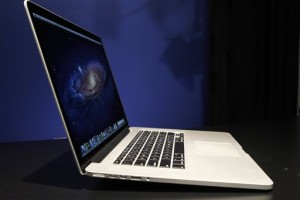Many ’90s kids remember the scene in the beginning of “Home Alone” where the McCallister family sits around the table having dinner. “Fuller, go easy on the Pepsi,” Kevin’s aunt says to her son knowing about Fuller’s persistent problem of wetting the bed. But this phrase is much more than just a warning against drinking too much soda.
Product placement is a form of advertising that is used in movies and TV shows where branded products are placed in a movie setting. It usually aims to be inconspicuous and be part of the scene so that the audience will see a product in the natural environment.
Product placement can add credibility to a movie. It is easier to identify with a story or with movie characters when they use products familiar to everyday life. It is also another venue for advertisers to show their product without being obtrusive.

Apple Inc. is an example of a company that mastered that skill. According to Brandchannel.com, a Webby-award-winning website about branding, in 2011 Apple had its products in more than 40 percent of the top films, among which are “Mission Impossible: Ghost Protocol” and “The Twilight Saga: Breaking Dawn Part 1.” In fact, one of Apple’s biggest marketing secrets is free product placement. The company whose products can be seen in so many movies doesn’t pay a penny for the brand placement.
According to InvestorPlace, a website that provides information about the stock market, in “Mission Impossible: Ghost Protocol” Apple received more than $23 million in free product placement by providing computers, phones and other devices to the movie.
The technique pays; while not everyone can afford a shiny yellow Chevy Camaro like Bumblebee from “Transformers,” technical devices are in general more affordable.
“I don’t have money for a car,” Tarandita Subiantoro, a BYU student from Indonesia, said. “But things like phones and computers in the movies definitely influence my taste, the way I choose products.”
It started a long time ago and was present even in silent movies. Silent movie “Wings” (1927) had Hershey’s chocolate in it, and famous Christmas movie “It’s A Wonderful Life” (1946) shows a young boy dreaming to be an explorer with a prominent copy of National Geographic in his hands.
Many people are not aware that product placement happens, and that is exactly what advertisers want — to influence consumers’ choices without consumers ever noticing.
Neuroscience major Andrew Ray knows about product placement because of the marketing classes he takes.
“I think product placement is an innovative way to advertise a product,” Ray said. “When you show the usefulness of your product by showing how it makes other people’s lives easier, you’ve created an advertisement that is invaluable.”
Douglas McKinlay, an advertising professor at BYU, sees product placement as a necessary monetary help for a film industry.
“We have all come to accept product placement as a legitimate way to help fund the movie,” McKinlay said. “(Product placement can be) good if the product is written into the script so that it looks like part of the landscape.”




